 contact
contact contact
contactBreguet’s Pre-1914 Aircraft
Challenge™
related
forum discussions and
further details concerning these aerial machines can be found at
http://www.theaerodrome.com/forum/pioneer-aviation/.
&
History
of
Airplanes Photos and summaries of historical aircraft
&
wright-brothers.org
| index Enter Search Keywords advanced | 01-50 51-100 101-150 151-200 200-250 251-300 301-350 351-400 401-450 451-500 501-550 |
| 200 Rieflin Headless Aeroplane Co. Hydro-aeroplane of 1912. Set world’s record for sustained hydro-aeroplane flight over water when piloted by Fred C. Eels on June 25, 1912 over Irondequoit Bay, New York, seventy-three miles in 1:21:00, at an average speed of fifty-four miles per hour. Eells’ flight was cut short when his supply of gasoline gave out and he dropped his machine to the bay. The best previous record for sustained flight was forty-six miles. |
  |
| 199 Unidentified Monoplane. Possibly an ornithopter or glider. |
 |
| 198 Maurice Clément Biplane of 1910. Also known as the Clément-Bayard biplane; constructed by the firm Letord et Niepce and fitted with a 43 hp 4-cylinder Clément-Bayard motor. |
 |
|
1908
Clement Biplane, piloted by Maurice Clement. It was
constructed at
Leotard et Niepce and powered by a 43 hp Clement-Bayard
motor. Weight
500kg. Wingspan 11.6 metres. Wing area 60 square metres.
Length 11.5m
This image is displayed at [http://www.ear)
|
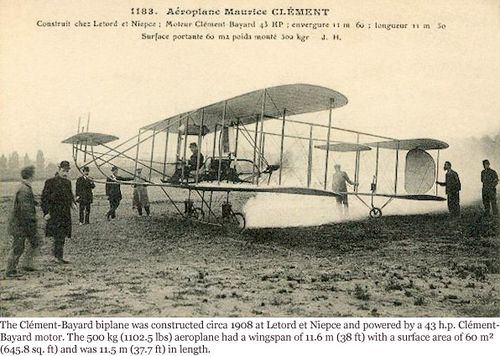 |
| Clément
was
the
owner
of
Maison
Clément-Bayard
which
manufactured
automobile engines before branching into airships and aero
engines.
This is believed to be the 1908 Clément-Bayard No. 1. It
crashed
in the River Seine in 1909. This image is displayed at http://www.libraries.wright.edu/special/digital_collections/exhibits/flying_exhibit2.html & http://www.flickr.com/photos/amphalon/3878498768/ |
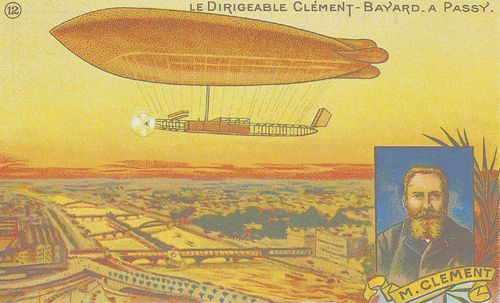 |
| 197 Donnet-Lévêque type C of 1912. In 1912 four Donnet-Lévêque flying boats type A (no ailerons) and type C (with ailerons) - assigned numbers from 8 to 12 - were obtained by K.u.k. Seeflugwesen. This specific aircraft sporting number 10 entered service on January 4, 1913 and was written off in December 1913 due to damage sustained in a crash. more1 more2 more3 Donnet-Lévêque (Reconnaissance Seaplane and Trainer, 1913-1918) |
 |
| This
image
is displayed at http://www.forum-auto.com/automobiles-mythiques-exception/section5/sujet377390-525.htm
|
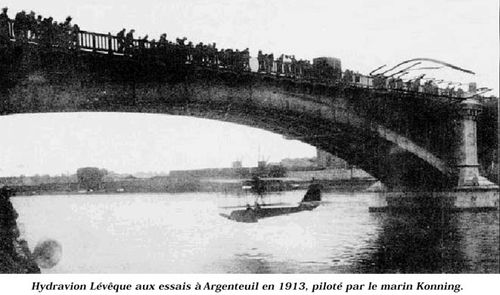 more1 more2 |
| 196 Libański “Jaskółka” of 1911. Early Polish aircraft built by Libański featuring a 3-cylinder Delfose rotary engine placed ahead of its propeller. The Jaskółka (Swallow) never flew with the additional upper wing as shown in the workshop at Lwów (Lemberg), although it did fly in August 1911 as a monoplane at Wiener Neustadt - without its proven-to-be-impractical top plane. |
 |
| 1910. This image is displayed at http://www.elknet.pl/historia-lotnictwa/av_hist/index.php?position=0.0.54 |  |
| 195 Chanute-Avery
Multiple-wing
Gliding Machine
“Katydid”.
Seventh and final form of multiplane soaring machine built by Chicago carpenter William Avery to the specifications of Octave Chanute based on the principles of the Pratt truss. Photographed here with Chanute during its extensive testing by Avery from the dunes on the shores of Lake Michigan at Miller Beach, Indiana, near Chicago in September of 1896; the Katydid was so named because of its insect-like appearance and made some two hundred glides that summer. The Octave Chanute Pages |
 |
| 194 Novák No.1 of 1911. First helicopter of
František
Novák in its final version with lighter rotor, 25 hp
3-cylinder
engine and large anti-rotating panels dating from the
summer of 1911.
Novák started his pioneering work on helicopters already
in 1909
with a model helicopter and in June 1910 he started
building his first
full size helicopter which used a motorcycle engine for
power. In this
first version it turned out that the 3 meter diameter
rotor was too
heavy and that the motorcycle engine was too weak. Later
Novák
was able to obtain a more powerful engine, a 3-cylinder
Trojan and Nagl
of 25 hp; and developed a lighter rotor of the same 3
meter diameter.
This helicopter did lift into the air unloaded - however,
as there was
no compensation for the reaction movement, the machine
counter-rotated
in the air and even the fitting of large vertical panels
did not stop
the helicopter from spinning. Coinciding with the start of
his more
advanced second helicopter, development of Novák’s first
ended
in the Fall of 1911.
|
 |
| 193 Sächsische
Verein
für
Luftschiffahrt
Flugapparat
of
1909.
Combination Drachenflieger-Radflieger designed by the Sächsiche Verein für Luftschiffahrt. The machine was powered by a 30 hp engine constructed by Fritz Hayn. Actual construction was done by the “Maschinenfabrik von Hayn u. Leilich” in Chemnitz. |
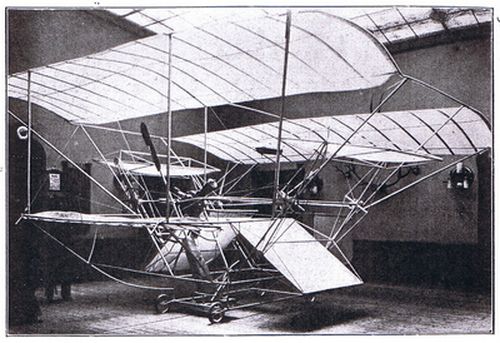 more1 |
| 192 N.F.B.
(Hilsmann
u.
Co.)
Eindecker.
“Niederrheinsche Flugzeug-Bbauanstalt Altenessen” Type e or Type d, built in 1911. FEBRUARY 12, 1910. A New German Flyer. ON the 4th inst., a monoplane, which has been designed and built by Herr Hilsmann, was given its first trials at Essen, and several long jumps of 60 to 100 metres were made. more1 |
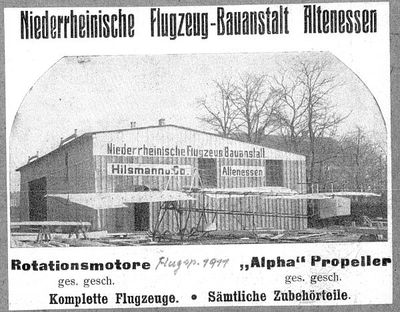 |
| 191 Obre Monoplane of 1910.
Third machine built by Emile Obre after two biplanes in 1909, designated, for some unexplained reason, Obre No.1 and No.3. Probably photographed at Issy-les-Moulineaux. |
 |
| 190 Berger Monoflygplan of
1911.
Unsuccessful design by Swedish actor Bror Berger, powered by a 42 hp R.E.P 5-cylinder fan type air-cooled engine. Building began during 1910 in a closed-down cinema behind the Blanchs Café, and in September 1911 Berger tried the machine at Gärdet, Stockholm. The first take-off attempt ended when the landing gear collapsed and the propeller broke. A new propeller was bought from Landskrona while sturdier gear was fitted, and the resulting new trials were, according to the press, very promising. Yet after 1911 nothing more was mentioned of the monoplane until it was donated to the Stockholm Technical Museum in 1927, in the same state of repair as it remains in today. |
 |
| 189 Monoplano Antoni, Biposto
tipo
1913.
Bi-place monoplane built by the “Società di Aviazione Antoni” at campe di San Giusto. |
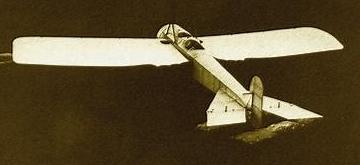 |
| 188 Deboignie Monoplane of
1912.
Third and last monoplane designed by Édouard Eugène Joseph Ghislain Debongnie (born in 1883) of French nationality but naturalized to Belgian in 1905. Deboignie opened a workshop in Nieuport-Groenendyck,with his first monoplane coming out 1910. A second with characteristic curved wings appeared in 1911 and another in 1912. Although building three different monoplanes his firm was principally in propeller production. The works folded in 1914 with the beginning of the war. |
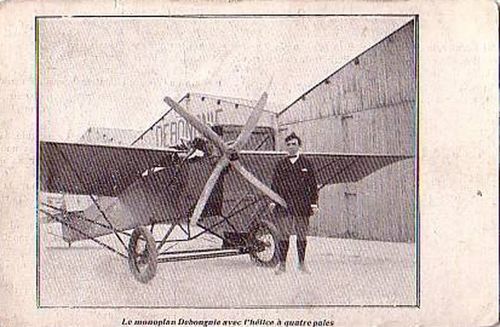 |
| 187
Gakkel V Hydroplane. High wing monoplane
powered by
a 50 hp Oerlikon, designed and built in
1911 by Яков Модестович Гаккель (Ya. M Gakkel).
|
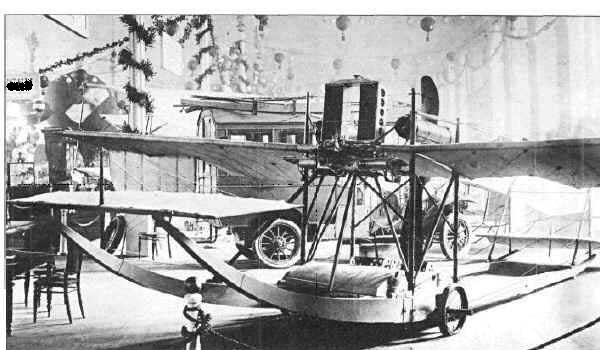 |
| 186
Burgess-Curtiss model D. Hybrid of Farman and Wright machines, completed after the Harvard-Boston Aero Meet in 1910, first tried at the end of this year and flown into 1911. Passenger flights were undertaken until it crashed in April 1911. Its power plant was a 60 hp Hendee V-8, while a proposed 50 hp Gnôme was never fitted. Photographed November or December 1910 at Ipswich. |
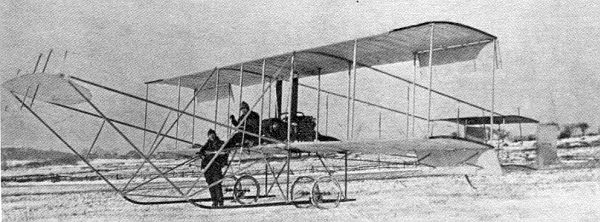 |
| 185
Reid No.2. Reid’s second machine
powered
by a 55 hp 5-cylinder Viale radial
engine, 29 feet long, with a 32 foot span. The machine was
quite
successful and was flown numerous times in 1912 by Reid
and by Ernest
Anctil, who assisted in its construction.
|
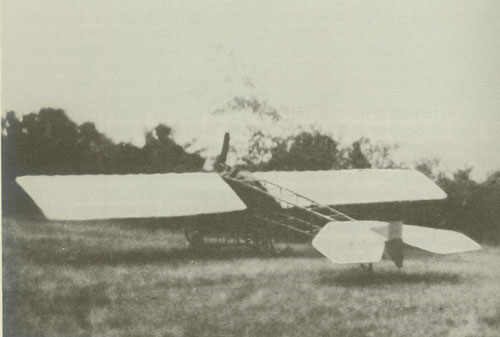 |
| 184
Bossi-Mojoli II Biplano. Powered by a Zust motor
and
built by the firm of the Zari brothers in
1909. Enea Bossi emigrated to the USA after WWI.
|
 |
| 183 Merćep-Rusjan EDA VI.
Monoplane built by the Rusjan brothers      at
the workshops
of Mihajlo
Merćep in Zagreb; completed sometime in Autumn 1910.
Unfortunately,
while promoting the upstart firm “Agramer Aëroplanfabrik
M.
Merćep” at Belgrad in January 1911, Edvard “Eda” Rusjan
fell to his
death when the wings collapsed on this machine. at
the workshops
of Mihajlo
Merćep in Zagreb; completed sometime in Autumn 1910.
Unfortunately,
while promoting the upstart firm “Agramer Aëroplanfabrik
M.
Merćep” at Belgrad in January 1911, Edvard “Eda” Rusjan
fell to his
death when the wings collapsed on this machine. EDVARD RUSJAN 1886-1911 |
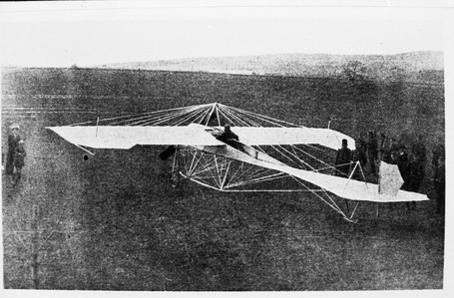 more1 more2 more3 Giuseppe and Eduardo replacing the propeller of EDA I (1909) others im |
| 182 Pfitzner Monoplane of 1910. Designed by Alexander Pfitzner, built by the Curtiss company at Hammondsport, N.Y., and flown by Pfitzner himself, but with only variable degrees of success. A solitary, unsuccessful, flight attempt had been made in December 1909, but it was only in early 1910 that proper flights were begun to be made with it. ALEXANDER L. PFITZNER Sándor (Alexander) Pfitzner 1880-1910 |
 more1 more2 more3 more4 |
| 181 Martin Monoplane Glider. Built by William H. Martin of Canton, Ohio, himself, sitting in the pilot’s seat. The glider was flown, towed behind a car, in 1908 in Ohio, and then in 1909 at New York, during trials conducted by the Aeronautic Society. The craft was ultimately donated to the Smithsonian.  The William H. Martin 1886 Monoplane   |
 more1 |
| 180 Curtiss-Willard Banshee Express of 1910. Designed on the specifications of Charles F. Willard and built by Curtiss, the first flight of the Banshee Express took place at Mineola, N.Y., and established an American record by carrying 3 passengers (1200 lb gross) on August 14, 1910. |
 |
| 179 Bellamy Hydroavion. Voisin-built Archdeacon glider acquired and motorized by French inventor Emile Bellamy in 1906. |
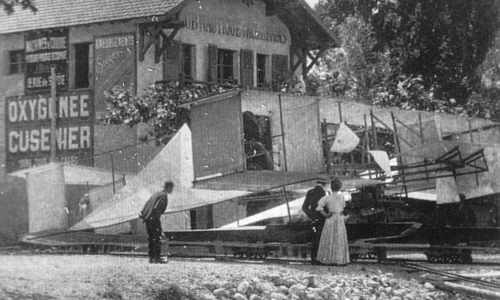 |
| 178 Rumpler Eindecker of 1910. Inconclusive model. Possibly the Walter Stein Eindecker. In 1910 Rumpler built monoplanes for several designers, which included the Eggers, Pegelow and Haefelin Eindeckers. All were powered by the Rumpler 50 hp Aeolus engine and all did not fly. |
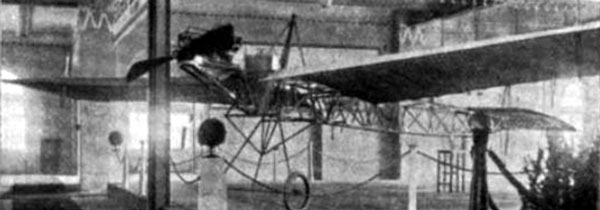 |
| 177 Salvador Monoplano 1911. Designed and constructed, starting in 1910, by Don Arturo Salvador Gómez at Valencia, Spain. |
 |
| 176 Hino No.2 Monoplane of 1911. Pusher monoplane designed by the Japanese captains Hino and Tokugawa. Its inline 4-cylinder engine was by their own design and developed between 18 and 30 hp. |
 |
| 175 Caproni Ca.8 Monoplane of 1911. |
 |
| 174 Lohner No. 1 of 1910. (description and details pending). |
 |
| 173 Kimball Biplane of 1909.
Wilbur R. Kimball's aeroplane “New York No.1” at Morris Park, New York, during its christening by the well-known Ziegfield Follies showgirl Anna Held on March 12, 1909. With eight 4-bladed propellers driven by one engine; the big machine was built at Morris Park under the direction of the American Aeronautic Society but appears not to have flown with any great success. |
 |
| 172 Paulhan-Tatin Aéro Torpille No 1. Powered by a 50 hp Gnôme;
the “Torpedo” was designed by Victor
Tatin with Luis Paulhan being a sponsor of its 1911
construction.
MORE: Victor Tatin (1843-1913) Avant Lilienthal, un précurseur mal connu Victor Tatin compressed air powered Aeroplane of 1879 Victor Tatin Ornithopter of 1874 L'Aéro-Torpille 1911-1912 Tatin-Paulhan... |
  |
| 171 Fritz Russ Flyer of 1910. An American flying machine
with
wings in the form of half cylinders and
immense helical spirals, or screws, set within them.
|
 |
| 170 Sachsen Doppeldecker of
1911.
First Sachsen doppeldecker - powered by a 55 hp Argus and built by Alfred Manhardt and Erich Schmidt at the Sächsische Automobil- und Flugzeugwerke; the fore-runner to Deutsche Flugzeug Werke (D.F.W.). |
 |
| 169 Antoinette Monobloc of
1911.
Last design of the soon liquidated, and then-named firm “Antoinette Aéroplan-Ateliers”. Powered by a 50-60 hp Antoinette engine, the Leon Levavasseur-designed machine, aka the Antoinette Blindé, aka the Antoinette Latham, never left the ground. |
 |
| 168 Clark & Fitzwilliams
Cycloplane of 1910.
Built in Buffalo, New York, the pedal-powered Cycloplane (sometimes Cycleplane) was 16 feet long spanning 15 feet, weighing about 55 pounds; with approximately 100 square feet of wing surface. Warping wings, front elevator and rear plane with rudder, were all controlled by levers on the frame. It is claimed that flights of 100 feet with a 119 pound pilot were made. |
 |
| 167 Bristol Biplane Type T Sequence number 45. Used by Marcel Tabuteau in the June 1911 Circuit de L’Europe. Alternatively the machine was sometimes known as the Challenger-Dickson Biplane. |
 |
| 166 Székely IV Parasol of
1913.
Fourth machine designed and built by the Hungarian Mihály Székely (Hungary then part of the K.u.k - Austro-Hungary). A typical parasol wing machine with the pilot and passenger sitting in a nacelle beneath the wing-tractor configuration, with the engine high before the wing and petrol tanks above. |
 |
| 165 Vuia 2 Monoplane.
Designed and built by Romanian pioneer Traian Vuia in 1907. Claimed to be a rebuilt Vuia 1. Compact airframe and folded wings are distinctive features of this design which was powered by a 25 hp Antoinette motor. |
 |
| 164 Bellanca Parasol Monoplane
1911.
Third design of Giuseppe Mario Bellanca (1886-1960). It was his first US design - the other two were designed and built in Italy (Milan). Built in the backyard of his brother Carlo’s grocery shop in New York, the parasol’s first flight was made on the airfield at Mineola, New York in the fall of 1911. The engine was a 3-cylinder Anzani of 30 hp, mounted before the wing. The machine was quite successful and Bellanca opened a flying school using it. He gave lessons to Fiorella LaGuardia, later mayor of New York City. |
 |
| 163 BMFW
Stahleindecker
Militärtyp.
Militäreindecker [Military monoplane] designed by Ing. Philipp Enders [System Enders] announced in Flugsport 1911 to be constructed by the Flug Technische Gesellschaft Nürnberg-Fürth E.V., yet in the same issue a drawing infers that it is to be constructed by the Nürnberger Motoren und Maschinenfabrik. In the end the steel-constructed machine was exposited in the Berlin ALA (Algemeinen Luftfahrt Ausstellung) 1912 as a finished machine of the Bayerische Motoren- und Flugzeugwerke Nürnberg. |
 |
|
162 |
 |
| 161 Zerbe Multiplane of 1910.
Five-wing multiplane - the second of three such multiplanes built by Californian Professor Jerome S. Zerbe, which came to grief on January 11, 1910 during the 1910 Los Angeles International Air Meet at Dominguez Mesa. Zerbe is somewhat of a mysterious figure whose real name was only recently determined to be James Slough Zerbe. |
 |
|
160 |
 |
|
159 |
 |
| 158 Ellehammer Helicopter of 1912. Tested sporadically until 1916, when a roll-over during a trial brought matters to a grinding halt. It was a co-axial aircraft, with two rings of 6 meter diameter, turning in opposite directions. Made of aluminium tubes, each ring supported 6 more wings of one square meter each. The 6-cylinder star-shaped engine produced 36 hp and its power was transmitted to the rings by means of a hydraulic clutch, which was also an invention of Ellehammer. Although the aircraft could lift up on several occasions during tests, I could never accomplish a free flight. |
 |
| 157 Paulat
Hydro-Aero
Biplane
of
1911.
Ion Paulat (1873-1954), born at Cioara, near Braila, was a sailor who at Galati built the first Romanian seaplane. As the Ministry of War provide no assistance to him, Paulat had difficulties obtaining an engine to power the aeroplane. In the end - through friendly help in order to conduct a flight test - he obtained one of the two 55 hp Hilz engines needed. With one engine the machine flew in early November 1911, making a jump of 10 meters at a height of 35 centimetres. As Paulat did not succeed in obtaining the required second Hilz engine, he designed the light 1912 Hydro-Aero Monoplane - suited for one Hilz engine - and completed in June 1912 as a landplane. This machine crashed on June 6, 1912. Paulat was called under arms during the Balkan War (1912-1913), but once returning, decided to end his aeronautical work due to his financial difficulties. |
 |
|
156 |
 |
| 155 Bleriot VI Libellule. Libellule after its first
modification in July 1907. Built in 1907 by
Louis Blériot, and powered by a 24 hp Antoinette engine.
|
 |
| 154 Nyberg Flugan. Carl Richard Nyberg began
work
on this Swedish flying test-bed in 1897,
with tests and alterations to the design of the Flugan,
the “Fly”,
being made over a number of years.
|
 |
| 153 Christmas
Red
Bird
I
of
1909.
First of three iterations of Red Bird built by Dr. William Whitney Christmas. DR. WILLIAM W. CHRISTMAS 1865-1960 Dr. Christmas claimed to make his first flight in March of 1908 in a plane of his own design. Christmas Bullet |
 |
|
152 |
 |
| 151 Silverston “Vacu-Aerial”
Flying
Machine No. 2 of 1912.
Also known as Dr. Rudolph Silverston’s Milwaukee Flying Machine No. 2. |
 |
01-50 51-100 101-150 151-200 200-250 |
|
 |